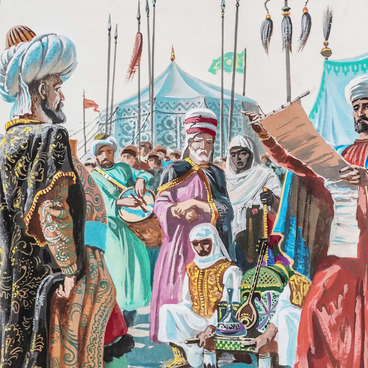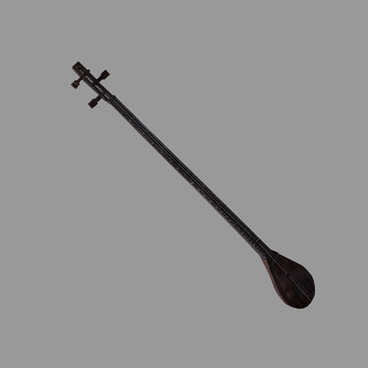Al-Din Wa Al-Adab Journal was published in Kazan at the beginning of the 20th century. The publication was founded and edited by a teacher, scholar, theologian and public figure, Galimjan Barudi.
Galimjan Barudi was born in the family of a merchant in 1857. From an early age, he studied reading and writing, devoted a lot of time to religious education. In 1882, Galimjan Barudi became the Second Imam (clergyman) in the White Mosque in Kazan, and a year later, he received the right to establish his own madrasah, Muhammadiya - an educational institution for the training of Muslim clerics. Since 1905, Galimjan Barudi devoted his life to teaching, letting out textbooks, publishing in periodicals, and in 1906, he began to publish his own journal, Al-Din Wa Al-Adab.
The program of the journal of Galimjan Barudi consisted of several sections: pedagogical, bibliographic and literary critical. It published the teachings of Islam, explained superstitions that were contrary to the spirit of the Muslim religion, and also published editorial answers to religious issues.
In the commencing issue of the publication, Galimjan Barudi published a welcome speech explaining the reason for creating the journal: ‘A long time ago, I got the idea to write a book about the religion of our ancestors, about virtue and to submit it to the judgement of the public. However, for various reasons this intention was not fulfilled. Currently, under favourable conditions for freedom of the press, I decided to bring the plan to my readers in parts within the journal. I will strive to publish it in a generally accessible language, as required by the specifics of periodicals.’
Like many publications of that time, the journal was published without illustrations. Teachers and shakirds (students) of the Muhammadiya Madrasah collaborated with the publication. For example, the commencing issue of the journal was completed by the poem Дин вә әдәб, which was made by Mazhit Gafuri, the shakird of the Muhammadiya Madrasah, who later became a famous poet. In addition to his works, journal published poems by historian and religious figure Hasan-Gata Gabyashi, teacher of the madrasah Ahmad-Zaki Validi, Imam of one of the cathedral mosques in Kazan and Quran commentator Muhammedsadyyk Imankoly.
Galimjan Barudi was a talented publisher and keenly felt the main moods of the times, therefore he always kept readers informed of all the events that took place in the Islamic world. Publications on social and political issues held pride of place in the journal. Translations of articles from foreign sources were posted in Al-Din Wa Al-Adab, as well as comments on articles from local newspapers: Tarjeman, Caspiy, Koyash, Yoldiz and other domestic publications.
A significant number of journal articles were devoted to education, upbringing and pedagogy. Galimjan Barudi featured materials on medical issues, which outlined the dangers of addictions, provided recommendations for maintaining health or getting rid of one or another ailment.
Galimjan Barudi was born in the family of a merchant in 1857. From an early age, he studied reading and writing, devoted a lot of time to religious education. In 1882, Galimjan Barudi became the Second Imam (clergyman) in the White Mosque in Kazan, and a year later, he received the right to establish his own madrasah, Muhammadiya - an educational institution for the training of Muslim clerics. Since 1905, Galimjan Barudi devoted his life to teaching, letting out textbooks, publishing in periodicals, and in 1906, he began to publish his own journal, Al-Din Wa Al-Adab.
The program of the journal of Galimjan Barudi consisted of several sections: pedagogical, bibliographic and literary critical. It published the teachings of Islam, explained superstitions that were contrary to the spirit of the Muslim religion, and also published editorial answers to religious issues.
In the commencing issue of the publication, Galimjan Barudi published a welcome speech explaining the reason for creating the journal: ‘A long time ago, I got the idea to write a book about the religion of our ancestors, about virtue and to submit it to the judgement of the public. However, for various reasons this intention was not fulfilled. Currently, under favourable conditions for freedom of the press, I decided to bring the plan to my readers in parts within the journal. I will strive to publish it in a generally accessible language, as required by the specifics of periodicals.’
Like many publications of that time, the journal was published without illustrations. Teachers and shakirds (students) of the Muhammadiya Madrasah collaborated with the publication. For example, the commencing issue of the journal was completed by the poem Дин вә әдәб, which was made by Mazhit Gafuri, the shakird of the Muhammadiya Madrasah, who later became a famous poet. In addition to his works, journal published poems by historian and religious figure Hasan-Gata Gabyashi, teacher of the madrasah Ahmad-Zaki Validi, Imam of one of the cathedral mosques in Kazan and Quran commentator Muhammedsadyyk Imankoly.
Galimjan Barudi was a talented publisher and keenly felt the main moods of the times, therefore he always kept readers informed of all the events that took place in the Islamic world. Publications on social and political issues held pride of place in the journal. Translations of articles from foreign sources were posted in Al-Din Wa Al-Adab, as well as comments on articles from local newspapers: Tarjeman, Caspiy, Koyash, Yoldiz and other domestic publications.
A significant number of journal articles were devoted to education, upbringing and pedagogy. Galimjan Barudi featured materials on medical issues, which outlined the dangers of addictions, provided recommendations for maintaining health or getting rid of one or another ailment.

